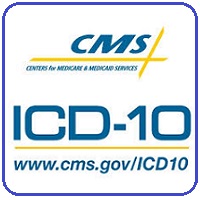 The Centers for Medicare & Medicaid Services (CMS) released the Next Steps Toolkit to help you analyze and improve your ICD-10 progress. By tracking and comparing key performance indicators (KPIs), you can:
The Centers for Medicare & Medicaid Services (CMS) released the Next Steps Toolkit to help you analyze and improve your ICD-10 progress. By tracking and comparing key performance indicators (KPIs), you can:
- Assess progress to identify any productivity or cash flow issues
- Address opportunities to improve revenue cycle management
- Maintain progress and keep up-to-date on ICD-10
CMS also released a companion infographic with easy-to-follow steps from the Next Steps Toolkit. The infographic focuses on three key steps:
1. Assess Your Progress
Establish a point of comparison for each KPI you would like to track. Your goal should be to compare KPIs from before and after the October 1, 2015, transition date.
CMS released a fact sheet focused on KPIs to help you better understand how to analyze and track your ICD-10 progress. This fact sheet includes a list of KPIs that may be helpful to your practice, such as days to final bill and claims denial rate.
2. Address Your Findings
Once you have identified opportunities for improvement, you can develop a feedback system to:
- Improve the accuracy of your clinical documentation and code selection
- Check for any systems issues
- Resolve system problems with payers
3. Maintain Your Progress
ICD-10 updates take place annually on October 1, following the same timeline used for ICD-9 updates. Be sure to keep all your systems and coding tools updated.
Review the General Coding Guidelines on a regular basis. Separate official guidelines are available for:
Keep Up to Date on ICD-10
Visit the CMS ICD-10 website and Roadto10.org for the latest news and official resources, including the Next Steps Toolkit, ICD-10 Quick Start Guide, and a contact list for provider Medicare and Medicaid questions. Sign up for CMS ICD-10 Email Updates and follow us on Twitter.
